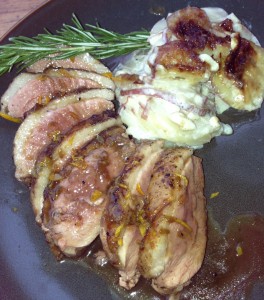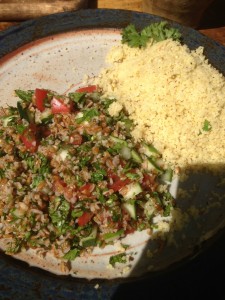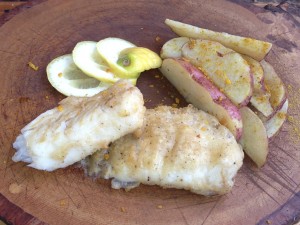
During Love and Romance weekend at the Minnesota Renaissance Festival, we decided to make the most decadent (calorie laden) and romantic meal we could come up with. Duck L’Orange and Potato Dauphenois. The potato dish has been a long-standing favorite of Alice the Cook’s and it was nice to show it off again. Ideally, the potatoes and the duck should be nicely caramelized on the top for appearance and taste sake.
There were no leftovers with this dish.
Duck
¼ cup granulated sugar
2 tablespoons water
2 tablespoons Sherry
1 ½ cups orange juice
2 tablespoons shallots, minced
1 1/2 cups chicken stock
4 oranges, sections cut from membranes
2 duck breast halves, seasoned with salt and pepper
¼ cup unsalted butter
2 tablespoons orange zest
Preparation:

Boil the sugar and water for several minutes, until the syrup caramelizes and turns a golden brown color. Add the vinegar, juice, shallots, and chicken stock and simmer until the sauce is reduced to a little less than a cup. Add butter and 1 tablespoon of orange zest. Stir in orange sections.
Before cooking, score the duck fat with a knife so that the duck fat made render properly. In a hot skillet, sear the duck breasts, fat side down, over very high heat until caramelized (not burnt) for about 3-5 minutes. Turn the duck breasts over and continue cooking for about 5 more minutes. Pour the prepared sauce over the duck breasts and continue cooking with the duck fat and sauce together for 4 more minutes. Take the duck and let it set for 2 minutes outside of the pan and cut on a bias, garnish with the sauce and remaining orange zest.
Potato Dauphinoise
Preheat over to 350 degrees F
3 lbs of red potatoes, thinly sliced
6 large garlic cloves, minced
1 large garlic clove, halved
4 table spoons of butter
2 1/2 cups of heavy cream
1/2 cup milk
Salt and pepper to taste
Place the potato slices into a bowl of cold water to remove the excess starch. Drain and pat dry with paper or cloth towels. Take the halved garlic clove and rub the cut side around a wide, shallow, ovenproof dish or cast iron pot. Butter or spray oil the dish/pot generously and blend the cream and milk together.
Cover the bottom of the dish with a layer of the potatoes. Dot a bit of the butter and minced garlic over the potatoes and season with the salt and pepper. Pour a bit of the cream and milk mixture over the layer. Continue making layers until all of the ingredients have been used, ending with just a layer of cream.
Bake for about 1 1/4 hours. If the potatoes are browning too quickly, cover with a lid or a piece of aluminum foil. The dish is done when the potatoes are soft and tender and the top is golden brown.
Serves 8




